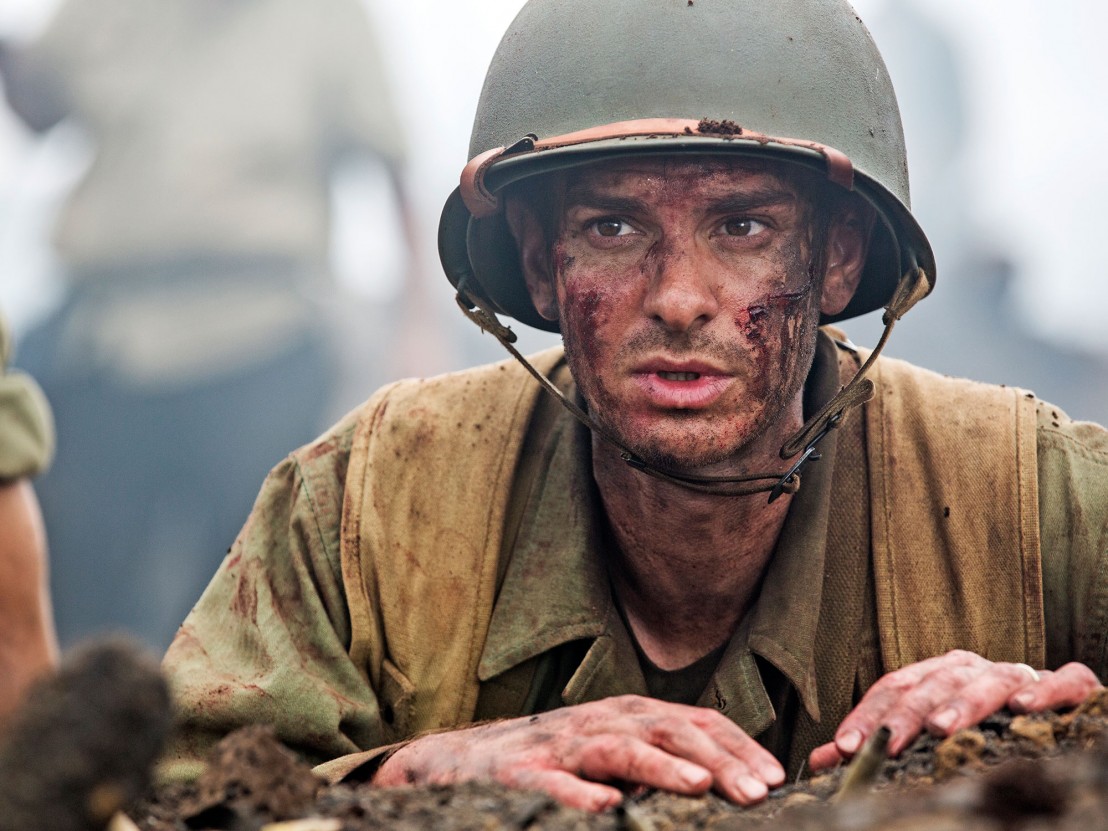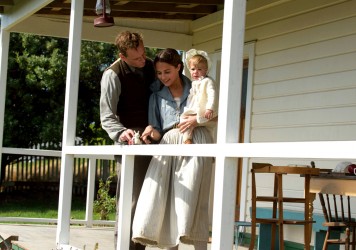
Mad Mel returns to the director‘s chair, preaching pacifism in a church whose walls are splashed with gore.
Mel Gibson returns to the director’s chair after ten years in order to pay tribute to army medic Desmond Doss who, during World War Two, single-handedly carried 75 men to safety in the Battle of Okinawa after the rest of the troops had retreated. He was the first conscientious objector to be awarded the Medal of Honour, a man who defended his right not to bear arms and who stood up for his convictions in the face of great adversity. In its early sequences, screenwriters Andrew Knight and Robert Schenkkan deliver a cliché ridden war-time romance, but it evolves into a brutal and bloody gore fest.
Andrew Garfield takes on the lead role of Doss and approaches it with a Forrest Gump-ian type swagger. On meeting nurse Dorothy Schutte (Teresa Palmer) at the local hospital, he falls head over heels in love and, after donating blood, goes back the very next day to ask her out on a date. Doss married Schutte in real life, so there’s good reason to include their initial meeting. As the two kiss, set against a backdrop of the Blue Ridge Mountain and with an overbearing score from Rupert Gregson-Williams swelling to the extreme, it’s a little difficult to become truly invested in their romantic relationship.
Doss’ belief in peace at all costs was born out of a fight with his brother that saw him correct his aggressive ways at the very last minute. His reasoning for enlisting in the army, and his steadfast refusal to take up arms, are explored via flashback sequences that depict a violent home life. His father (Hugo Weaving) also served in the war, with the repercussions of his service culminating in alcohol-fuelled fury against his family. There’s little nuance reserved for these complex and sensitive issues, with Gibson more interested in Doss’ heroic deeds in a cold and violent place.
Vince Vaughan appears, playing what is supposed to be the aggressive sergeant, but he’s about as intimidating as a field mouse no matter how loudly he shouts. Doss’ fellow soldiers are introduced in typical fashion, with each given a nickname and, over the course of their training, we get to know them. This serves as the final third of the film, which boasts a gripping emotional heft as the men fall one by one. Sam Worthington turns in a convincing performance as Captain Glover who is forced to admit he is wrong to call out Doss’ pacifism as cowardice. He plays the role shrewdly until he is made to give a private speech to Doss declaring him a hero.
As soon as the platoon reach the precipice of the gloomy wasteland of Hacksaw Ridge, the blood, guts, limbs and innards start flying, waving a sharp farewell to the corny dialogue and sweet sentiments of romance and the humour of the getting-to-know-you training sequences. We witness a soldier using a corpse as a shield and flamethrowers burning men alive. The Japanese troops swarm the ridge, presented as cold-blooded killers for the most part. Their icky stereotypical portrayal doesn’t sit right within this tale of pacifism and faith. Saying all that, it’s difficult not to admire the intense and breathless sequences from Gibson and cinematographer Simon Duggan. They expertly whip up a relentless frenzy of violence to convey the unconveyable cruelty and carnage of war.
Published 4 Sep 2016

The star-spangled tag team of Michael Fassbender and Alicia Vikander can’t save this ludicrous period weepie.

By Ed Gibbs
Paolo Sorrentino transitions to the small screen (with a Jude Law assist) and comes up trumps.

François Ozon returns with a full-bodied tale of stunted romance and the pained legacy of warfare.